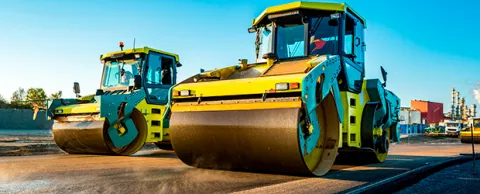
If a city is planning to make a new infrastructure investment, odds are it will have something to do with transportation. As a category for investment, transportation is growing faster than any other, as you’ll read below in a new analysis from Onvia.
We’ve written about the need to get smart about traffic before. Such as the latest Urban Mobility Scorecard that showed the average American wastes 42 hours sitting in traffic each year — double the congestion a few decades earlier.
And while that’s a great reason to invest in smart transportation infrastructure, that’s not the only benefit. Below, Onvia outlines some recent transportation projects in cities like yours and what the motivating factors (and early results) were behind them. — Kevin Ebi
By Nick Schiffler, Onvia
With an increasingly heavy national emphasis on infrastructure investment, city governments are turning that focus to their own transportation infrastructure. In Q1 of 2017, the number of transportation projects released by state and local governments grew by 13% — the highest growth rate of any major industry. Most of this growth was driven by cities and towns.
So where are these cities planning on spending their transportation dollars? One area of focus is better, smarter roadways, often referred to as intelligent transportation systems. According to a recent infrastructure spending report, cities continue to be the largest buyer of government road construction services, with 43% of total bids and RFPs released for projects like improved curbs, intersections and traffic lanes. Spending on technology like smart traffic lights is also on the rise.
This investment in road infrastructure brings about two major benefits for cities – more efficient road systems for cars, and safer transportation networks for drivers, cyclists and pedestrians alike.
Safety was the goal when Columbia, MO, set their Vision Zero policy in 2016, which committed the city to reducing the number of traffic fatalities and injuries to zero by 2030. As the first step towards this bold goal, they’re investing nearly $4 million to improve traffic signals, signalized crosswalks and intersections on Providence Road, a major thoroughfare running through downtown Columbia and past the University of Missouri.
Another example of investment aimed at increased traffic efficiency comes from Columbus, OH. They partnered with infrastructure solutions firm HNTB to overhaul their traffic signal system, and recently released a second RFP to further bolster it. The new system integrates 450 miles of fiber optic cable, wireless radios and camera control software systems to feed data into the Columbus traffic management data center.
Columbus is seeing direct results from allocating dollars for upgrading their technology. The data they collect is helping the city identify traffic issues and reduce travel times for their residents, and also determine where to send snow and ice crews to keep the roads safe during the cold, snowy Midwest winters.
Cities like Columbia and Columbus are already reaping the benefits of making roadway improvements a priority. They’re just two parts of a national spending trend that shows no signs of slowing any time soon.
Nick Schiffler is a business-to-government (B2G) market analyst and content marketer for Onvia, leading commerce intelligence at the core of the B2G marketplace. Follow Onvia on Twitter and LinkedIn to stay up to date with the latest government market insights.



